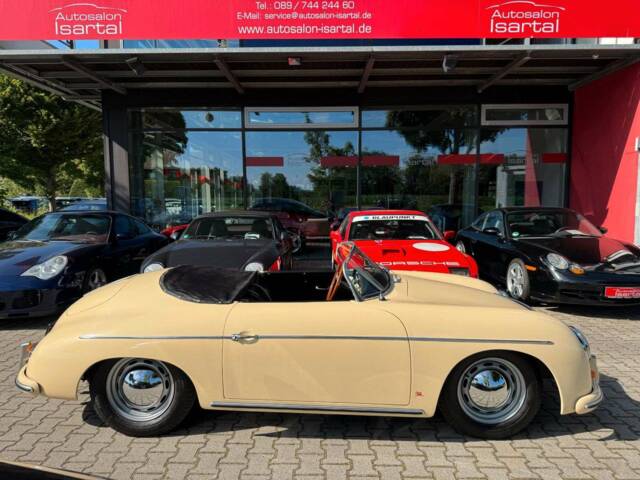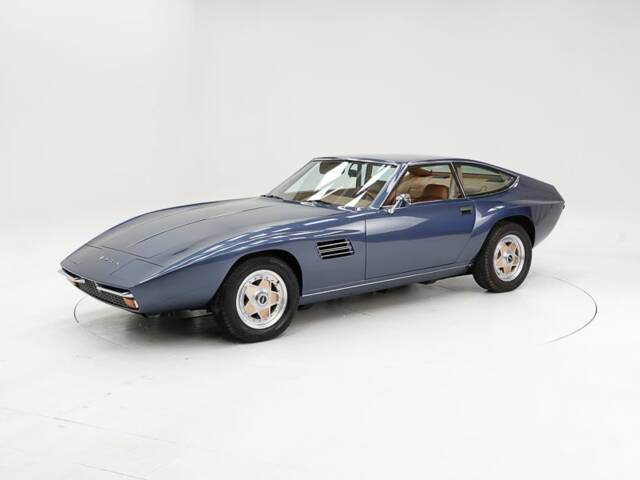- Voiture
- Intermeccanica (3 offres)
Intermeccanica classic cars for sale
Intermeccanica stands for hand-built sports cars combining Italian design flair with robust American V8 technology. Founded in Turin in 1959, the marque is known for its rare Italia, Indra, and Speedster models—each one crafted to deliver both road presence and an authentic driving experience.
Résultats de la recherche

1968 | Intermeccanica Speedster
Sonstige Marken Sonstige

1972 | Intermeccanica Indra
Indra - Cabriolet

1974 | Intermeccanica Indra
1974 Intermeccanica Indra 2+2 '74
History of Intermeccanica
Intermeccanica was established in Turin, Italy, in 1959 by Frank and Paula Reisner, initially specialising in tuning kits and high-performance components for European brands. Quickly, the company graduated to producing its own complete cars—starting with racing models like the lightweight IMP, which captured class victories at legendary circuits such as the Nürburgring. By the 1960s, Intermeccanica gained attention for hand-built coupes and roadsters featuring Italian design and American muscle under the bonnet. After various partnerships and business shifts, the company relocated first to the US and then Canada, where it has remained family-led and continues to build highly authentic, limited-series automobiles.
Model History
The Intermeccanica portfolio began with the Formula Junior racer and expanded with the ground-breaking Apollo GT—a collaboration featuring a hand-crafted body, Buick V8s, and high-output track credentials. This was followed by the Italia, developed from the Griffith 600 platform, noted for its steel coachwork by Franco Scaglione and chassis engineering by John Crosthwaite. The Spyder and Coupé varieties of the Italia became the marque’s hallmark from the late 1960s until the early 1970s, before the Opel-based Indra took over. Production then shifted towards precision-built replicas like the Porsche 356 Speedster and Kübelwagen. Each transition marked a fusion of Italian and American or German engineering.
Highlights of Intermeccanica
Each Intermeccanica model is defined by its hand-crafted steel bodywork, genuine Italian design lines, and high-quality finishing—never based on kit or home-assembly formats. Models like the Italia combine Ford or Chevrolet V8 power with distinguished design by Scaglione, plus era-defining details such as Cromodora alloy wheels and black leather interiors with Momo wood steering wheels. Suspension systems, such as all-independent MacPherson setups, were advanced for their era. The rarity of these vehicles (for example, about 200 Italia Spyder built) underscores their unique value among enthusiasts.
Technical Data
Special Editions and Collectible Models
The Italia Spyder stands as the archetype collectible: only about 200 cars were built between 1968 and 1972/73, exclusively export-focused for the American market. The later Indra, produced in collaboration with Opel, is noteworthy for its rarity and General Motors underpinnings. Hand-assembled Speedster and Roadster RS replicas with Porsche and VW mechanics, along with Kübelwagen tributes, continue the brand’s tradition of specialised, low-volume production.
Weak Spots and Common Issues
Intermeccanica models boast robust mechanicals thanks to their Ford and Chevrolet engines, yet prospective owners should consider age-related wear. The Indra, for example, was noted for past quality control issues. Pay close attention to steel bodywork for corrosion, and scrutinise original electrics and trim, as spares can be rare for hand-built models. Watch for fatigue on MacPherson suspension components and ensure authenticity of period interior elements, as replacements are difficult to source.
Engine and Performance, Transmission and Handling
Performance is a Intermeccanica trademark: the Italia Spyder, for instance, sprints from 0–60 mph in approximately 6.5 seconds courtesy of Ford V8 power. The Indra’s Chevrolet V8 offered classic muscle tone, while even the early Apollo GT balanced hand-crafted elegance with serious output from Buick V8s. Gearboxes are typically four-speed manuals, contributing to an engaging, analogue driving experience. Independent MacPherson suspensions at both ends and a low centre of gravity ensure the sharp handling that makes these cars sought after for enthusiasts. - Intermeccanica Italia (Ford V8, c. 1968–1972, c. 200 units)
- Indra (Opel/GM tech, c. 1971–)
- Apollo GT (Buick V8)
- Speedster & 356 replicas (VW or Porsche drive, primarily post-1981)
Interior, Comfort, Exterior and Design
Design on Intermeccanica vehicles is a deliberate fusion of Italian coachbuilding and American endurance. Bodies were crafted predominantly in steel, with signature traits like flared wing vents, chrome adornments, and flowing proportions from Scaglione’s pen. Cromodora or Magnum 500 alloy wheels were standard on many Italias. The interior was unmistakably Italian: black leather upholstery, deep-pile carpets, aviation-influenced dashboards, and Momo wood-rimmed wheels. Controls were electrically actuated, and features like electric windows and period radios were present. Accessories, including rare hardtops or original tonneau covers, enhance collectability.
Other Features
Intermeccanica’s international journey—from Italy to North America—means cars often display a blend of European engineering and American compliance features. Each car’s provenance is typically well documented, adding appeal for collectors. The marque’s springing bull/bear logo affirms its stylistic independence within the classic car scene.
Summary
Intermeccanica stands apart for its dedication to hand-built excellence, Italian design philosophies, and transatlantic engineering. The low production numbers, genuine craftsmanship, and blend of American V8 technology with sophisticated Italian styling give every Intermeccanica a distinct profile on today’s classic car market. Among connoisseurs, models like the Italia Spyder and Indra are prized for their authenticity and driving prowess.


